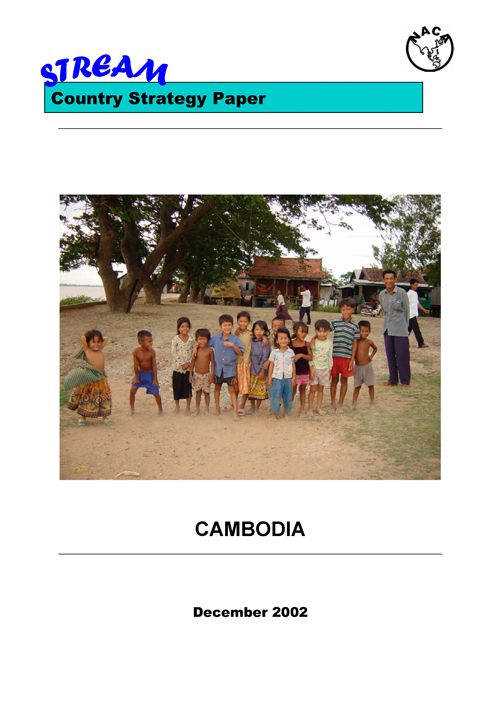Cambodia country strategy paper
1 December 2002 | 796 Downloads | .pdf | 262.61 KB | Cambodia, Gender, Livelihoods, gender and social issues
Cambodia is one of the poorest countries in the world; much of its population live in rural areas and many live below the local poverty line. The management of common property aquatic resources is of over-riding importance to food security and sustainable rural development in Cambodia. The key groups of poor people who use aquatic resources as part of their diverse livelihoods portfolios are subsistence fishers, small-scale aquaculture practitioners and aquatic resources collectors.
Subsistence fishers access mainly the rivers, lakes and inundated forests in Tonle Sap provinces, the lower Mekong and Bassac regions and the upper part of the Mekong. Small-scale aquaculture and/or the collection of aquatic resources are most important in provinces that are not rich in fisheries resources including Kompong Speu, Ratnakiri, Mondulkiri, Preah Vihear and Ortdar Meanchey. Freshwater capture fisheries probably contribute more to national food security and the national economy in Cambodia than in any other country in the world.
Privatisation of most of the national inland fishery brought “family scale” fishers into conflict with commercial lot operators, who, in spite of the law, have prevented subsistence fishers from accessing the resource through intimidation, violence and false imprisonment. Civil unrest, with lack of access to the resource by poor people at its heart, instigated management and institutional changes from HE Hun Sen, the Prime Minister, in 2001.
The central aim of the proposed changes is to develop a system of co-management of the fishery; however, there is not yet a provision in law for community fisheries or their co-management with the government. The current law makes provision for, and supports, “family scale” (subsistence) fishing, which is distinct from middle scale and commercial scale fishing activity. However, in contemporary Cambodia, poor people need to operate a level of fishing effort that is currently disallowed by law, and which provides no basis for poor people to escape from poverty through incremental increases in fishing effort.
The purpose of STREAM Cambodia is to strengthen, or develop, and communicate strategies, processes and practices that enable poor and vulnerable aquatic resources users to pursue their livelihoods objectives. This will be achieved through supporting better understanding of poor people’s livelihoods, building capacity of service providers, legal reforms and improved communication.
The STREAM Initiative was conceived, developed and continues to operate as a coalition of partners at local, national and regional levels. Securing the resources to achieve the objectives set out in this CSP is central to the STREAM Cambodia mandate.
This publication is also available in Khmer.
Creative Commons Attribution.

